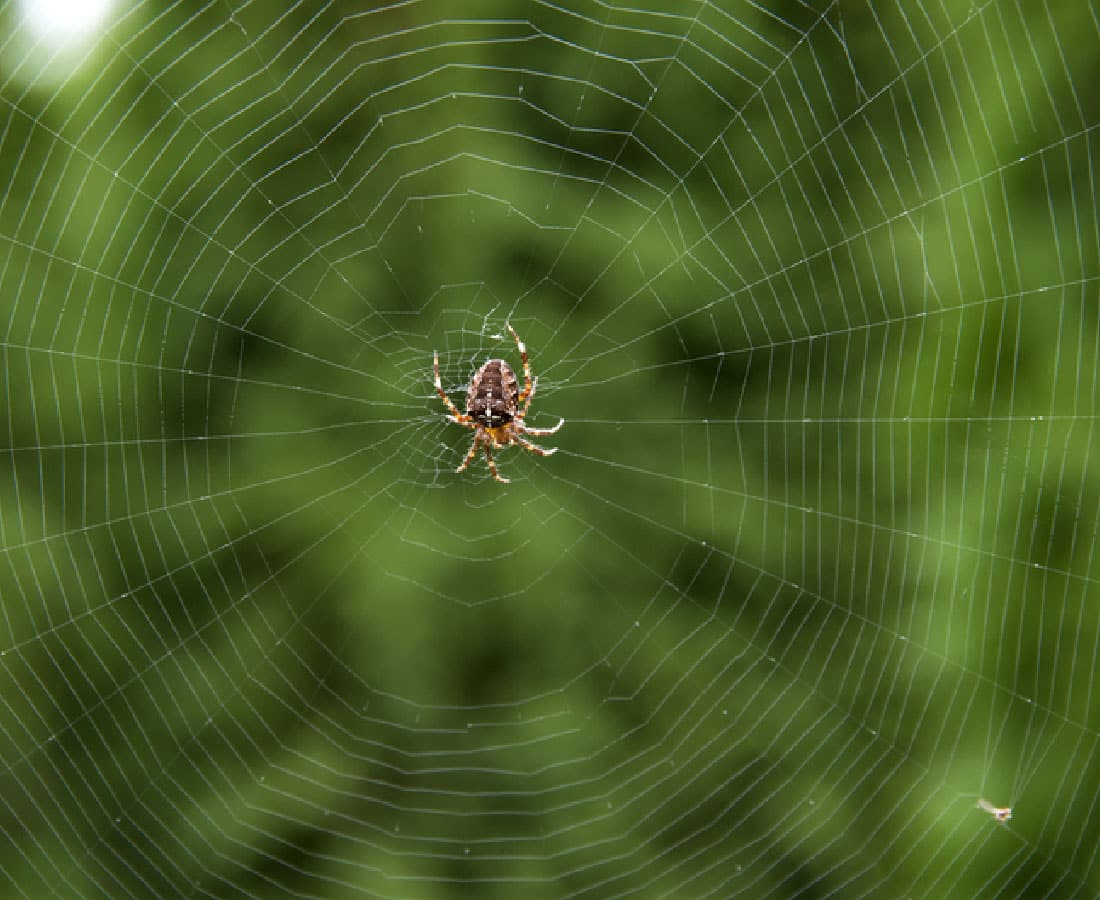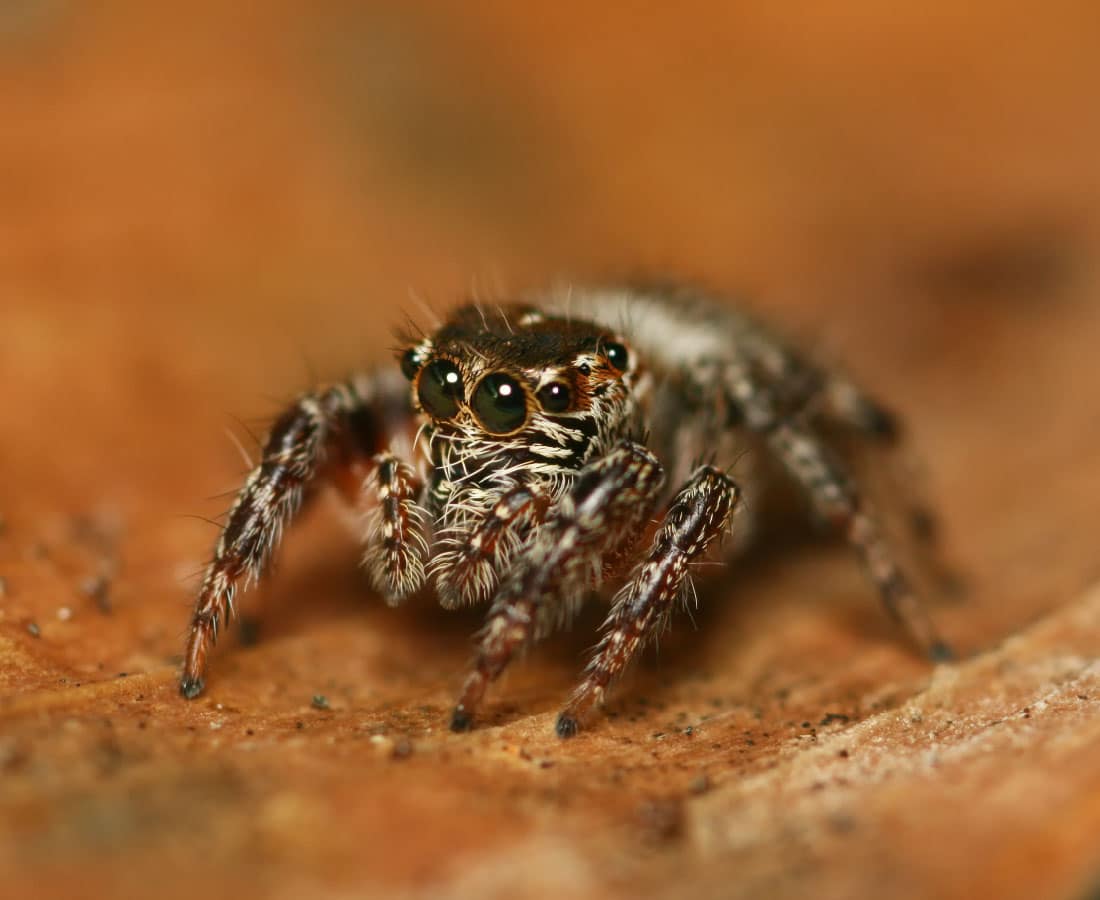REQUEST YOUR FREE INSPECTION
Spider Control Upstate, NY
Spiders often appear in horror movies, haunted houses and, worst of all, inside our homes where they are usually met with shrieking and the bottom of a shoe. It’s easy to understand why people cringe at the sight of a spider on the wall. The way they move is startling and unpredictable, their webs are sticky and their hunting methods can be rather gruesome. There are also many myths floating around about spiders (no, people don’t regularly swallow spiders in their sleep!) that make this pest seem much scarier than it actually is. In reality, almost all types of spiders found in the United States pose no threats to people.
Despite the benevolent nature of most spiders, there are two species in the southern and western United States that can cause serious harm when accidentally disturbed – the black widow and brown recluse. Below is a guide to help you identify some of the most common types of spiders and the potential threat they can pose to your health.

Black Widow Spiders
Black widows are black and shiny, with a telltale red hourglass shape on the underside of their abdomen. Young black widow spiders appear orange and white, becoming darker and more black in color as they age. This spider species is found throughout United States, but is most common in the southern regions where the temperature is warmer. Black widow spiders tend to seek out dry and dark locations that are protected, such as underneath stones or decks, as well as in hollow tree stumps and in firewood piles. They can also be found in man-made structures such as sheds and barns. Black widow spiders spin their webs near ground level.
While male black widow spiders rarely bite, females are known to be aggressive and bite in defense, especially when guarding eggs. Symptoms of a black widow bite include fever, increased blood pressure, sweating and nausea. Pain from a bite typically reaches a maximum in 1-3 hours. Fatalities are unlikely, as long as proper medical treatment is sought in a timely manner.

Brown Recluse Spider
Brown recluse spiders are venomous spiders found in many parts of the United States. They have a distinctive pattern of violin-shaped markings on their body and are usually between 6-20mm in size. Brown recluse spiders can inject necrotic venom which causes tissue destruction around the site of the bite, and may cause serious medical issues if left untreated.
Although brown recluse spiders are not native to New York State or Vermont, there have been reports of individuals finding them there. However, these sightings appear to be isolated incidents and not widespread occurrences across either state. In general, it is more likely for people to find other species of spider such as the American house spider or wolf spider in New York or Vermont. Therefore, while brown recluse spiders are not commonly found in these states, it is still important to take precautions when dealing with any spider you may encounter.
Call Bug-U Pest Control Today for a Free Quote.
Call us at (518) 747-2003

House Spiders
House spiders are often yellowish-brown in color with an elongated abdomen, although their color can be highly variable. Named after the fact that it is the spider species most commonly encountered indoors, house spiders are found worldwide and are common throughout the United States and Canada. While this species can be found under furniture and in closets, they are most commonly encountered in garages, sheds and barns, where catching prey is easier for them. Outside, they are often found spinning webs around windows and under eaves, especially near light sources that attract potential food sources. House spiders are nuisance pests and pose relatively little threat to humans, but they may bite when threatened.
Jumping Spiders
Jumping spiders are compact in shape with short legs, causing them to sometimes be mistaken for black widow spiders. They are usually black in color and covered with dense hair or scales that are brightly colored. Jumping spiders are found throughout the United States. Jumping spiders build web retreats, which can be found both indoors and outdoors. These spiders frequently hunt inside structures around windows and doors because more insects are attracted to these areas and their vision is best in sunlit areas. Outside, jumping spiders are commonly seen running over tree bark, under stones and boards, and on bushes, fences, decks and the outside of buildings.
Jumping spiders may bite in defense, but their bite is not poisonous. In fact, this species is more likely to run from a human threat rather than attack.
Long-Bodied Cellar Spiders
Cellar spiders are pale yellow to light brown in color with long, skinny legs and a small body. There are about 20 species of cellar spiders found throughout the United States and Canada.
Cellar spiders are typically found in areas with high humidity and moisture, basements and crawlspaces. They can also be found in the corners of garages, sheds, barns and warehouses, on eaves, windows and ceilings, and inside closets, sink cabinets and bath-traps. Cellar spiders are not known to bite and therefore pose no threat to humans.
Wolf Spiders
Wolf spiders are usually dark brown with paler stripes or markings, and they have long, spiny legs. This species is often large and hairy, which can alarm some people. More than 100 species of wolf spiders are found throughout the United States and Canada. Wolf spiders can enter structures in search of prey. Once inside, they tend to stay at or near floor level, especially along walls and under furniture. Wolf spiders may be brought indoors with firewood. Outside, this species can be found under stones, landscape timbers, firewood, leaves and other debris. They often rest in such sheltered places during the day. Wolf spiders can bite, but it’s extremely rare unless they are provoked or handled.




Do you have spiders?
Call Bug-U Pest Control right away at 518-747-2003

